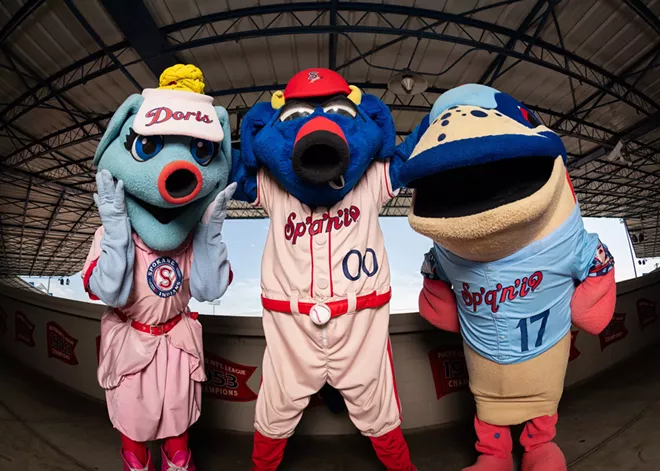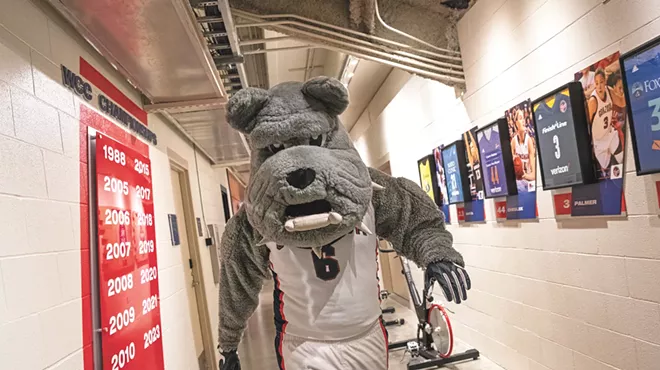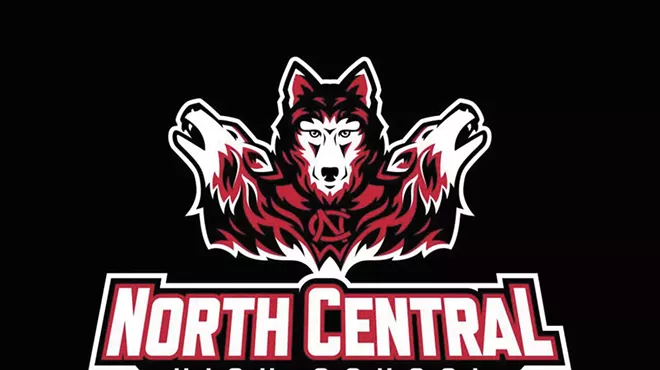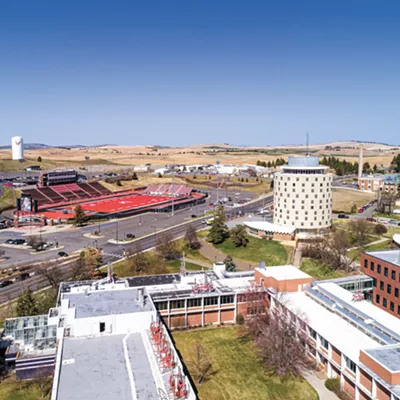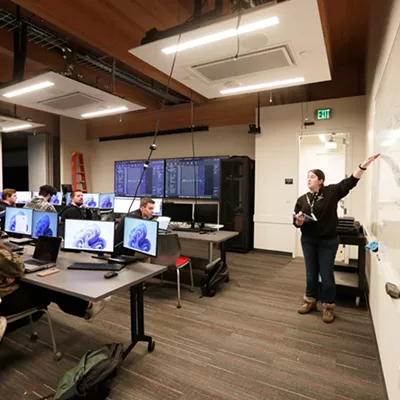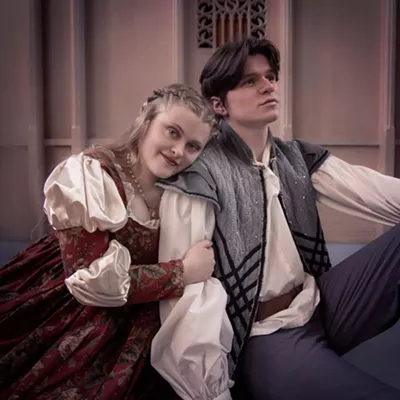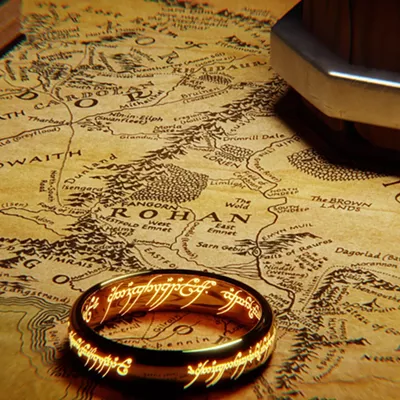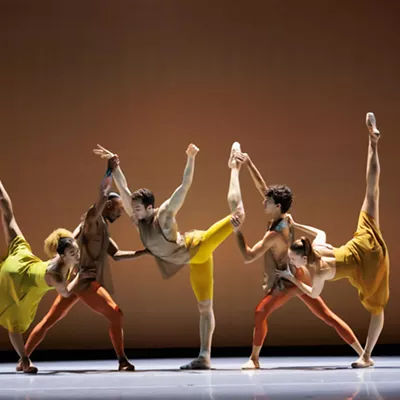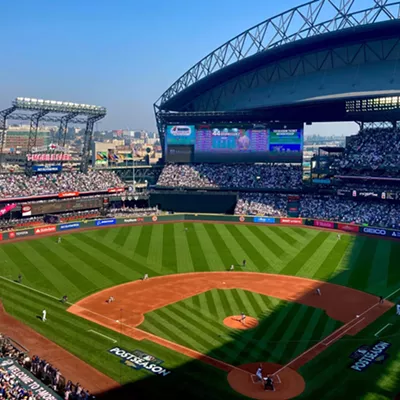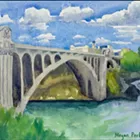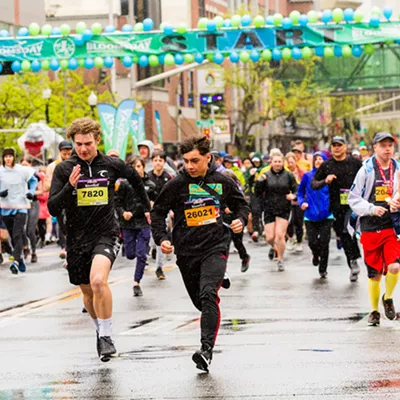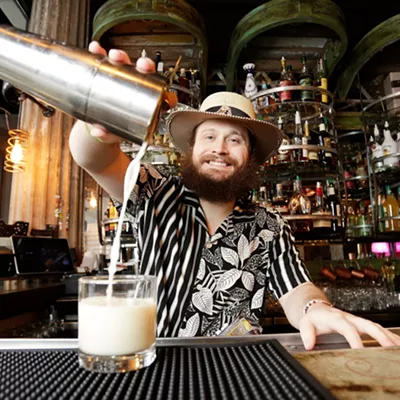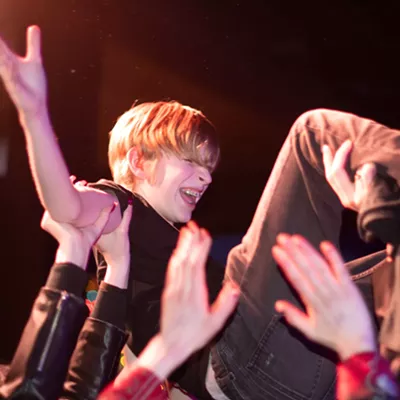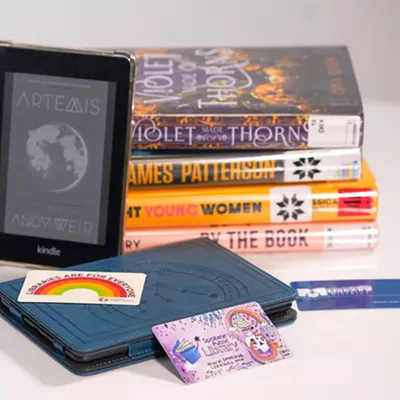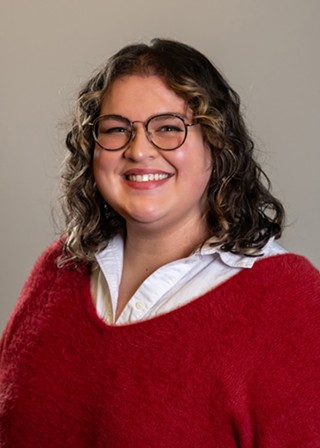As I type this, I'm being stared down by three pairs of eyes.
I keep my office decor to a minimum in order to keep distractions at bay. However, my signed Spokane Indians mascot baseball cards hang above my computer screen, serving as my own personal cheerleaders when I'm working on deadline.
There's no problem that the Spokane Indians' Doris' bright, permanent smile can't mend in an instant. You go girl, I imagine her saying while my fingers dart across my keyboard.
To be completely honest, I didn't always like mascots.
They're a bit sinister when you think about it. Oversized anthropomorphic figures who don't speak? Creepy! I even remember hiding in the bathroom at a Chuck E. Cheese in order to avoid seeing the giant mouse at my own seventh birthday party.
Despite the childhood fear, they've grown on me over the years.
My newfound love for mascots came in the form of a bright red fish. The moment I saw Ribby dash across the baseball field at the Indians' Avista Stadium and shake as if his little fish life depended on it, he nestled into my heart, and I've yet to let go. Every time I see him flap his fins or shake about, I'm filled with an amount of joy that cannot be replicated by anything else. Just looking at a photo of him makes the corners of my mouth turn upward.
But it runs deeper than just feeling happy and hyped up at a sporting event. Mascots represent a team, yes, but they're so much more than just a clever marketing ploy designed to sell T-shirts and plushies.
Max Knopik, who prefers the pronoun they, runs the Instagram account @swoop_simps where they document the life and times of Eastern Washington University's beloved eagle mascot, Swoop. The account isn't affiliated with EWU, but Knopik says it makes them feel more connected to their school.
"College is a time in our lives where we experiment, make mistakes, fall down, get up, make important choices and figure out who we are as individuals," Knopik says. "All of that comes back to me when I see our silly bird."
The account started as a joke between friends, but quickly grew into a way for Knopik to explore college life, make friends and get involved with the EWU community.
"People love the idea of being superfans of Swoop," Knopik says. "Students and faculty send in photos of themselves with Swoop, or send in 'Swoop spottings' of him around campus. Other mascots, students from different schools, and even people from different regions of the world follow us and have developed a love for Swoop. We're a smaller college, but our school pride runs incredibly strong."
But what about the community at large? School mascots are deeply loved by most students who attend that specific school. But sports team mascots are a whole different ball game when it comes to community involvement and public persona.
Aaron Croom knows that ball game like the back of his hand.
Croom, who works as the mascot manager for EWU as well as the Spokane Indians, wants the world to appreciate mascots just as much as he does.
As early as middle school, Croom was fascinated by mascots. That fascination followed him into his adulthood and now, it's his life.
"Working as a full-time mascot manager is as fun as you think it is," he says. "I want to share this fantastic world with as many people as possible."
We all know them (and I especially adore them), the Spokane Indians mascots: OTTO, Doris, Ribby and KC. (As well as the now-retired Recycle Man. Shout out, Recycle Man!)
With a team of four mascots, demand for performers is higher than ever. It's Croom's job to make sure the Indians have a lineup of amazing performers.
"Last year was sort of a test run of this new program I dreamed up," he says. "But now, it's in full swing."
The Mascot Pathways Project was inspired by Croom's own life, experiences and love of mascoting.
Through the program, the Indians bring on a crew of high school theater students interested in mascoting, and Croom trains them to perform. From there, the students perform at home games and community events all year, getting first-hand experience before they're even in college.
Once it comes time for graduation, Croom seeks college mascot opportunities for the students. Croom says most universities in the Inland Northwest grant students who opt to be the college's mascot a full-ride scholarship.
Croom has already had one student in the Pathways Project go on to become a mascot at a university and had his tuition fully covered because of his decision to become the character.
"Mascots have the power of fun in them," Croom says. "In a world where it's easy to get caught up, seeing a mascot and experiencing that joy is powerful and it can be life-changing." ♦

